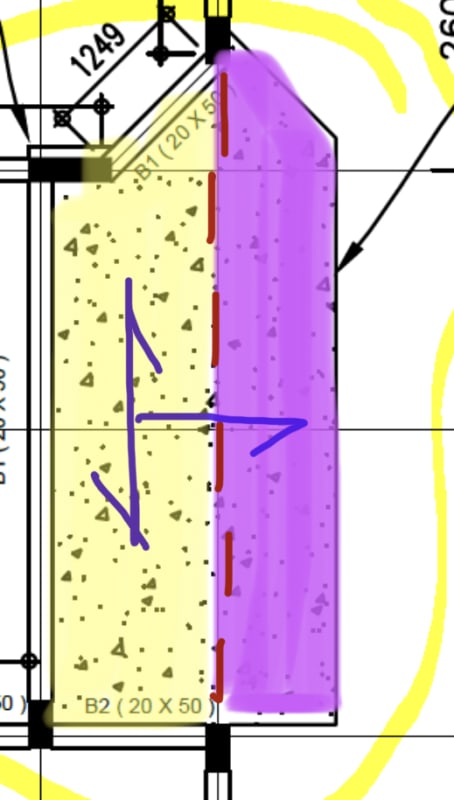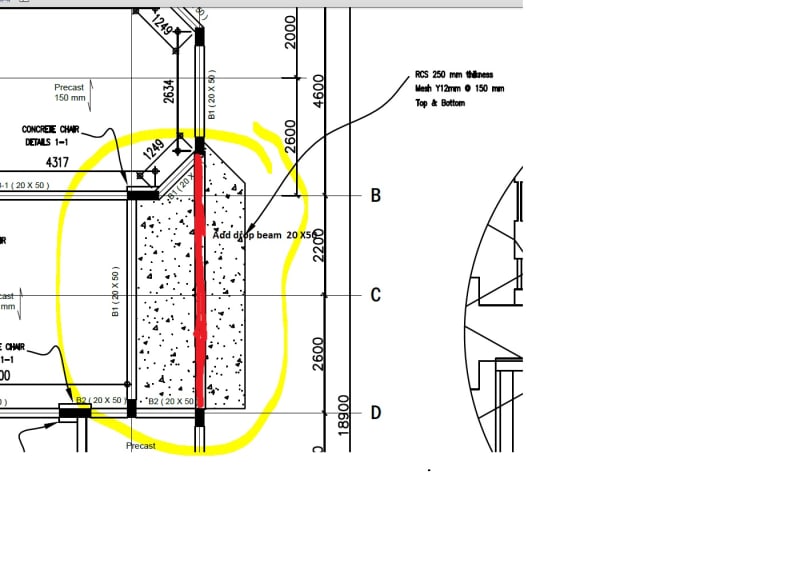Hi,
I am in the process of reauthenticating the design of a villa already in progress made by a former colleague who left our company. The villa consists of a G+1 floors, with provision for a future floor.
Currently, Superstructure works up to the 1st floor columns are completed, and the contractor now is in the process of fixing the formwork for the 1st floor beams.
We have a 250mm thick in-situ concrete slab with 3-sided supports, and 1-sided cantilever. However, I am concerned that the slab does not have a backspan, as the rest of the villa is constructed using hollow-core slabs. I would appreciate your advise on how we could possibly develop the rebars sufficiently to develop the necessary rigidity in the beam/slab connection with minimal architectural changes.
Please refer to plan extract attached. Note that the beams are 500mm deep.
Thank you for your support.
I am in the process of reauthenticating the design of a villa already in progress made by a former colleague who left our company. The villa consists of a G+1 floors, with provision for a future floor.
Currently, Superstructure works up to the 1st floor columns are completed, and the contractor now is in the process of fixing the formwork for the 1st floor beams.
We have a 250mm thick in-situ concrete slab with 3-sided supports, and 1-sided cantilever. However, I am concerned that the slab does not have a backspan, as the rest of the villa is constructed using hollow-core slabs. I would appreciate your advise on how we could possibly develop the rebars sufficiently to develop the necessary rigidity in the beam/slab connection with minimal architectural changes.
Please refer to plan extract attached. Note that the beams are 500mm deep.
Thank you for your support.


